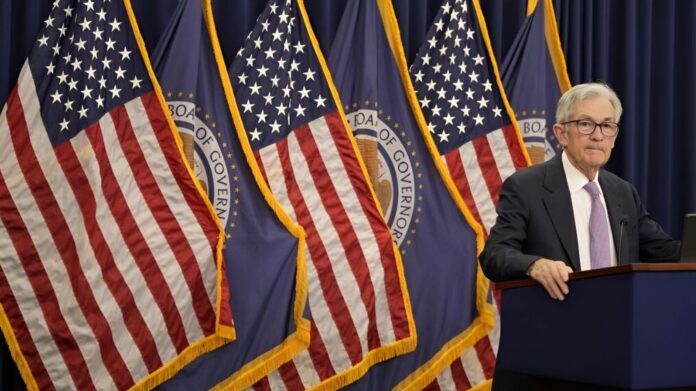
The Federal Reserve is holding its Payments Innovation Conference today, addressing topics such as stablecoins, DeFi, AI, and tokenization with leaders from TradFi and the crypto world.
This Tuesday, October 21, the United States Federal Reserve holds its long-awaited Payments Innovation Conference, an event that brings together key representatives from the traditional financial system and the crypto ecosystem to discuss the direction of emerging technologies in the payments sector.
The meeting, officially announced by the Fed Board, is broadcast live on its official website and includes the participation of executives from firms such as BlackRock, chainlink, Circle, fireblocks, Ark Investment, among others.
Governor Christopher J. Waller, one of the central bank's most active members on technology issues, opened the session by highlighting that innovation has been a constant in payments to respond to the evolving needs of consumers and businesses. Waller, said that the Fed seeks to examine both the opportunities and challenges presented by new technologies, with the goal of improve the security and efficiency of the payment system U.S..
Create your account and access the future of stablecoin payments.The conference is taking place amid a context of accelerated transformation in the financial ecosystem. The rise of cryptocurrencies, the growth of decentralized finance (DeFi), the expansion of instant payment systems, and the advancement of artificial intelligence are redefining the expectations of users and businesses. In this context, the Fed aims to understand how these tools can be integrated—or regulated—within a sound institutional framework.
Stablecoins, tokenization, and the TradFi-DeFi convergence in the Fed debate
One of the central themes of the aforementioned conference is the analysis of stablecoins, Digital currencies whose value is pegged to assets like the US dollar. These tools have gained popularity as a fast, efficient, and global means of payment, but have also raised concerns among regulators about their potential impact on financial stability. During the conference, current and future use cases, as well as emerging business models revolving around these digital currencies, will be discussed.
The Fed has also highlighted the risks associated with stablecoins, such as the lack of solid reserves or the possibility that, under certain conditions, they could destabilize the traditional banking system. In parallel, the evolving legal framework is being analyzed, including proposals such as the GENIUS Act, which seeks to establish clear guidelines for its issuance and use in the United States.
Another relevant axis is the tokenization of financial productsThis process allows traditional assets—such as bonds, stocks, or real estate—to be represented in the form of digital tokens that can be transferred and programmed on blockchain networks. The Fed has begun studying how this technology could improve the efficiency, traceability, and liquidity of financial markets, while raising questions about its interoperability with existing infrastructure.
La Convergence between traditional finance (TradFi) and decentralized finance (DeFi) It's also high on the Fed's agenda. The presence of institutional players like BlackRock alongside platforms native to the crypto ecosystem reflects a growing interest in exploring hybrid models, which could combine the security and oversight of regulated entities with the innovation and efficiency of decentralized technologies.
In her speech In her opening remarks, Waller stressed that the Fed is entering a new era for payments and that The DeFi industry is “not viewed with suspicion or contempt”.
Take advantage of digital payments. Trade stablecoins here."Rather, today, we welcome the conversation about the future of payments in the United States and in our local field, something that would have been unimaginable just a few years ago.", he stressed.
Artificial intelligence and the redesign of payments
La artificial intelligence applied to payments is another focus of discussion at the conference. The Fed has begun evaluating how this technology can optimize processes, detect fraud in real time, and personalize user experiences. However, the ethical and technical challenges involved in its implementation are also recognized, especially regarding data privacy and algorithm transparency.
Governor Waller has noted in recent statements that the central bank is conducting an in-depth analysis of the Use of smart contracts, AI, and tokenization in paymentsThis stance suggests that the Fed not only views technological developments from a regulatory perspective, but also considers their potential to modernize the nation's financial infrastructure.
"I look forward to examining the opportunities and challenges of new technologies, gathering ideas on how to improve payment security and efficiency, and hearing from those helping to shape the future of payments.", Waller commented.
The conference, therefore, presents itself as an opportunity for the various stakeholders in the ecosystem to share visions, concerns, and proposals. The participation of companies like Circle, which operate stablecoins, allows for a contrasting approach with those of traditional financial institutions seeking to adapt to a changing environment.

Main Cryptocurrencies Course
Basic levelBit2Me Academy brings you a new course in which you will learn everything you need about the most important cryptocurrencies that exist today.
A sign of openness to crypto innovation in times of transformation
The Payments Innovation Conference hosted by the Federal Reserve marks a significant moment in the global conversation about the future of moneyWhile no immediate regulatory announcements are expected, the fact that the world's most influential central bank is convening leaders from both worlds—TradFi and crypto—to publicly discuss stablecoins, DeFi, AI, and tokenization sends a clear signal of openness to dialogue.
In an environment where technology advances faster than regulation, these types of meetings allow building bridges between innovation and oversightThe Fed appears to recognize that while new financial tools present risks, they also offer opportunities to create a more agile, secure, and competitive payment system.
The livestream of the event and the inclusion of diverse voices reinforce the Fed's intention to maintain a transparent and participatory conversation. For the crypto community, this day represents a opportunity to demonstrate the maturity of the sector and its willingness to collaborate with regulatorsFor traditional institutions, it is an opportunity to better understand the dynamics of an ecosystem that can no longer be ignored.
Stablecoins and AI tokens: Bit2Me gives you access to innovation


